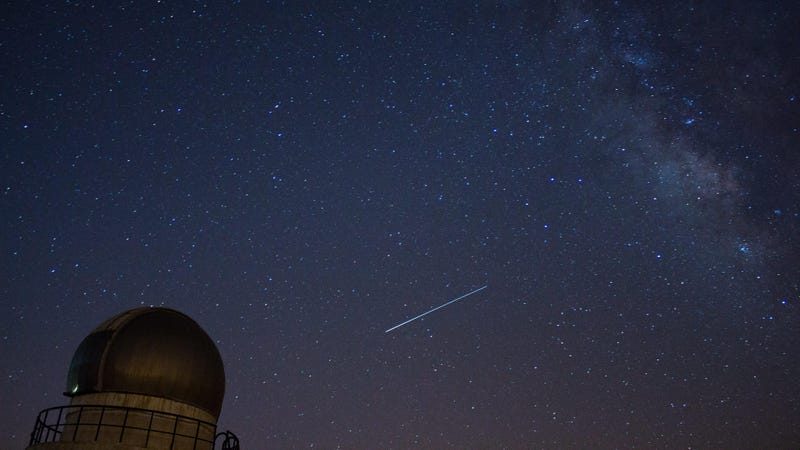The Lyrid meteor shower peaks tonight, but actually spotting a meteor could be tough going for lots of observers.
Meteor watchers can expect around 18 meteors per hour at the show’s peak. But the bright moon, a waning gibbous two days after the full moon, could wash out some of these “shooting stars.” Seeing meteors tonight will take work and a good amount of luck.
The Lyrid meteor shower originates from the comet C/1861 G1 (Thatcher), which orbits the Sun every 415 years—it last passed Earth in 1861. But in its wake, the comet left a cloud of dust. When Earth enters the cloud, dust particles entering the atmosphere create bright streaks. The meteor shower’s name, the Lyrids, comes the from the constellation Lyra from which the meteors once seemed to originate. Now that constellations have standard boundaries, the shower’s radiant (the location in the sky from which the meteors appear to arrive) is actually in the constellation Hercules.
Though not nearly as flashy as other showers like the Perseids and the Geminids, the Lyrids are the first recorded meteor shower, Sky and Telescope reported last year, with Chinese astronomers documenting the spectacle in 687 BC. The shower does occasionally flare to 100 meteors per hour, though the next big burst probably won’t happen for another two decades.
Nor will watching the shower be easy this year. The moon will rise shortly after the meteor shower’s radiant, Space.com reports, and the bright moon will wash out some of the meteors. But the shower is important to some skywatchers as it’s the first of a string of near-monthly meteor showers, leading up to the Perseids in August.
Advertisement
If you do attempt to see the Lyrids this year, it’s best to dress warmly, find the darkest spot you can, and expect it to take 20 to 30 minutes for your eyes to adjust to the dark.
Happy skywatching! I hope you see a meteor or two.
https://gizmodo.com/try-your-luck-at-watching-the-lyrid-meteor-shower-tonig-1834216084
2019-04-22 18:10:00Z
52780271464555

Tidak ada komentar:
Posting Komentar